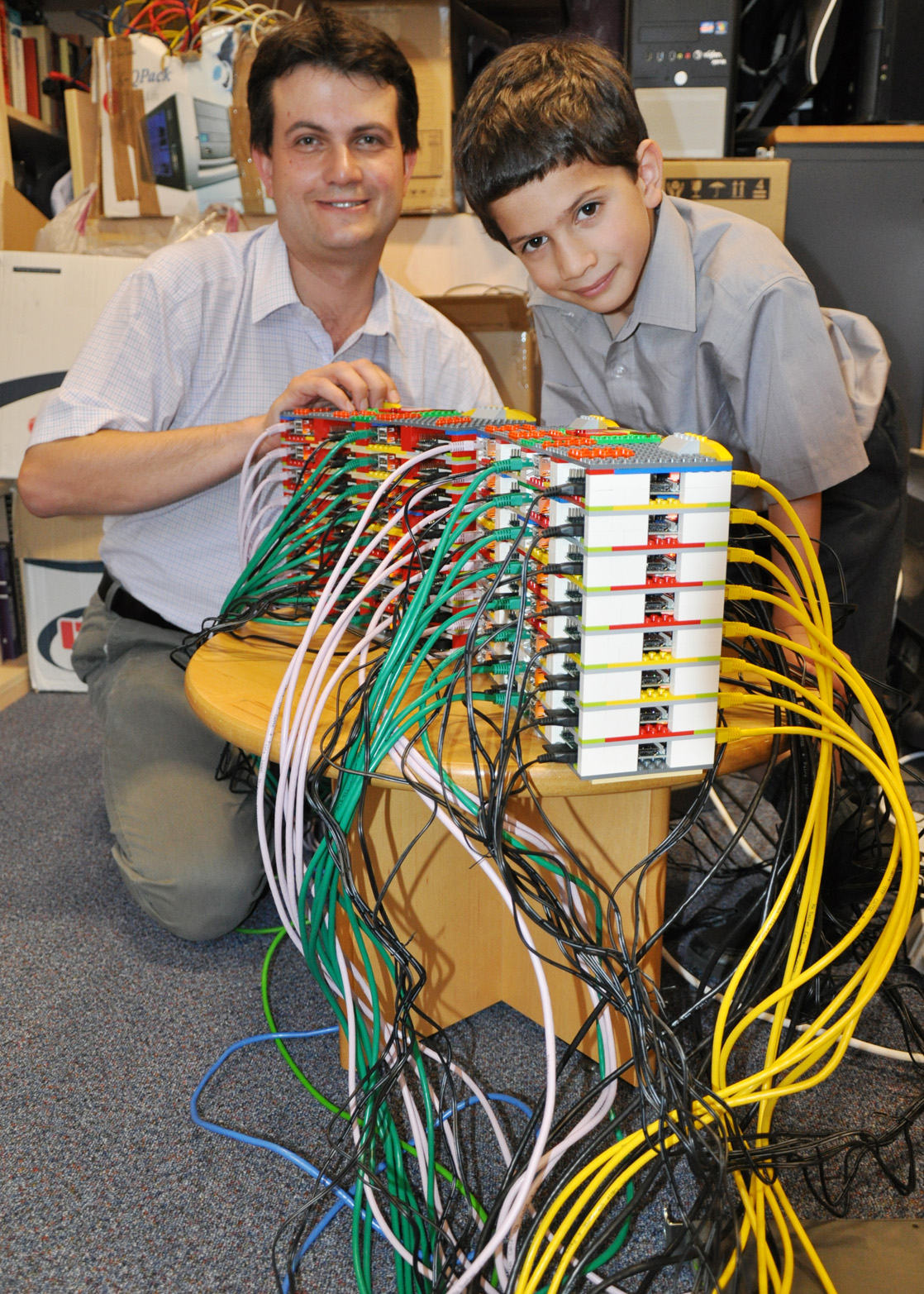This article is dedicated to previous projects of Raspberry Pi clusters over the world. Some of them are used for server, others as supercomputers. But this kinds of supercomputer were only for an educational purpose because the old Raspberries weren't powerful enough.
Here are the examples :
- Raspberry Pi Supercomputer by computational engineers from the University of Southampton
Computational Engineers at the University of Southampton have built a supercomputer from 64 Raspberry Pi computers and Lego. They wanted to build a low-cost, compact demonstration cluster.
 |
| Professor Simon Cox, the leader of the team, and his son with the cluster |
- Raspberry Pi Cluster
David Guill, the owner of a website where he publishes his engineering projects, challenged himself to build a Raspberry Pi cluster and gives all the details of his project.
   |
| Pictures of the finished cluster in his case |
- Raspberry Pi web server
An article describing the steps to make a Raspberry Pi cluster and use it as a web server.
  |
| Pictures of the finished cluster |


